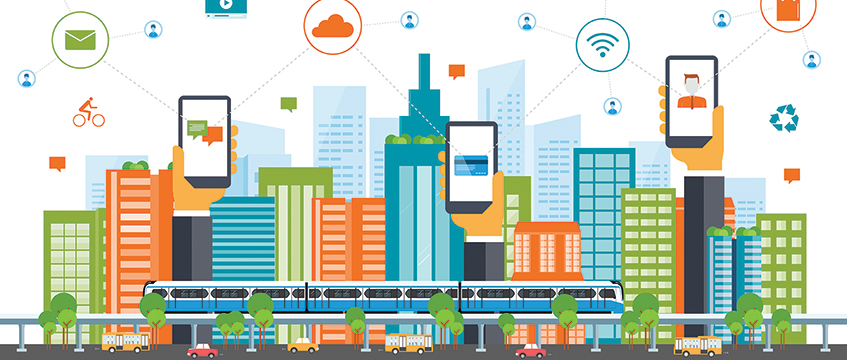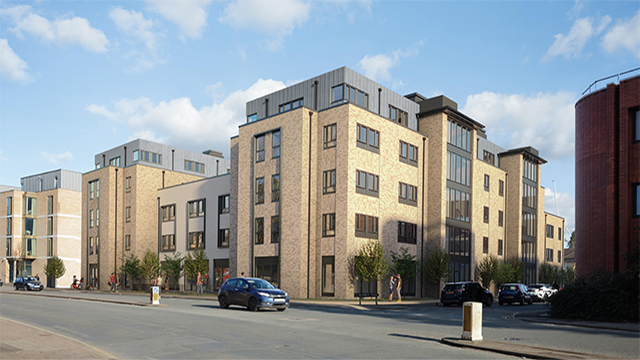Scotland takes the Smart Cities initiative
Edinburgh has always been a smart place – but now it is measurably smarter by 130km of the highest quality fibre cables.
Down the road in Glasgow they are celebrating some smartness of their own: Glasgow claims to have the UK’s most advanced Internet of Things.
Perth and Stirling and half a dozen other locations are also signed up to the Smart Cities ideal, and the Scottish Cities Alliance and the Scottish Property Federation are enthusiastically promoting it.
Edinburgh has always been a smart place – but now it is measurably smarter by 130km of the highest quality fibre cables.
Down the road in Glasgow they are celebrating some smartness of their own: Glasgow claims to have the UK’s most advanced Internet of Things.
Perth and Stirling and half a dozen other locations are also signed up to the Smart Cities ideal, and the Scottish Cities Alliance and the Scottish Property Federation are enthusiastically promoting it.
So is the Smart City Scotland initiative a brisk Forth of Firth burst of invigorating fresh air? Or is it a Scotch mist of worthy but cloudy objectives?
Edinburgh City Council insists there is nothing cloudy about their plans. It’s all very specific, very detailed and very practical to the extent that their Smart Cities team don’t like the expression “Smart City” because it suggests too much waffle.
The council was between political administrations when EG called, so no councillor was available to talk, but a spokesman explained: “The aim is to address key challenges that the city faces using smart technology as part of the overall strategy to deliver a place that has a high quality of life and supports inclusive growth.”
Current initiatives include cashless on-street parking and use of new sensor technology installed in over 300 litter bins as part of a trial to ensure that they are emptied before they reach capacity.
The bins are properly clever: during storms in February the council’s control room noticed the bins near Waverley station were suddenly – far too suddenly – full. They sent a team to investigate and found them stuffed with wind-damaged umbrellas. So they emptied them and everyone was happier. It demonstrates how efficient and quick city services can be if they get smart, the council says.
However, their latest move has serious property spin-offs. A study of the IT needs of city secondary schools led to the installation of 130km of high quality fibre – and, to future-proof, far more capacity than the schools needed today. The surplus bandwidth is now being made available to the private sector, boosting Edinburgh’s already deserved reputation as a tech hub. It’s all very reminiscent of the Smart City transition now roaring ahead in Helsinki.
Paul Curran, chairman of the Scottish Property Federation, applauds what Edinburgh (and the other cities) are attempting but says it will only have wide economic consequences if there is strong local leadership.
“In the end this is all about local leadership. That is improving but we’re not yet at the Manchester level. Councils are thinking positively about infrastructure, and that is essential to enable development. What we don’t want to see is a load of pet projects. Property investors will be attracted to the areas with real ambition,” he says.
Mark Jones, director at the Edinburgh office of Cushman & Wakefield, says the danger isn’t so much pet projects as massive umbrellas – not the kind that got stuffed into Waverley station litter bins, but the kind that embrace far too much. If the idea of the Scottish Smart City isn’t carefully policed, it will end up meaning not very much, he says.
Gigabit city
“In older cities, making a city smart is harder. Younger cities have it easier – you don’t have to dig up the roads. Edinburgh is already the UK’s first Gigabyte City, and has the highest use of public transport outside London, so there is scope to use technology to make the delivery of public services better.”
Property will benefit from the improved traffic management in a very constrained city centre, and the same goes for integrated park-and-ride schemes.
Edinburgh’s city deal, leveraging in up to £5bn of private sector investment, will build on these improved public services to create innovation hubs.
Jones says he doesn’t think there’s much direct impact for Edinburgh property values and locations – not yet – but in the longer term, the Smart City initiative enables a more collaborative and smarter workplace, and perhaps a smart residential market, too.
He says: “But this depends on money and local government able to lead and learn. Edinburgh is doing that. It would be a serious mistake not to embrace this change. Councils need to adapt their mindset,” he says.
Down the M9 motorway in Stirling, they are also developing Smart City projects as part of a potential £500m city region deal announced in November 2016. It’s early days, but project officer Kyle Barrie says there will be early implications for property.
Energy monitoring
“As the city begins to develop Smart City projects such as smart energy monitoring, we will begin to realise what impact this will eventually have on the use and energy management of the built environment. Consequently, this will influence how existing real estate is modified to fit current energy regulations and how new real estate is sustainably designed,” he says.
Longer term big data will mean more efficient use of infrastructure, improved traffic flows and a better environment for real estate, he says.
Stirling is already monitoring and publishing the movement of traffic flows via a smart monitoring system and open data platforms, and the councils say it is likely that this will impact on where infrastructure is planned. The real estate sector can take advantage of this data in its planning, too.
The Smart City data sets could also help with such office market details as booking co-working space.
“This really sweats the value from large scale developments,” says Barrie.
Scotland’s Smart City programme is fizzing like a live wire: the property business needs to plug into it.
Helsinki & Scotland
Helsinki’s Smart & Clean initiative is often hailed as a Smart City trail blazer.
A public sector initiative driven by private sector and citizen demand, the programme is focused on recycling and smart solutions to urban problems of traffic and co-living.
Launched in 2015, the Smart Cities Scotland programme was seeded with £10m from the European Union. Scottish cities have been exploring intelligent street lighting – reducing CO2 emissions by using LED bulbs and sensors to control them – digital health, transport management and WiFi, to create an “invisible foundation of core infrastructure”.
Glasgow, too
Glasgow won £24m funding to develop a series of Smart City initiatives – from LED street lighting to the My Glasgow app, used for reporting portholes.
Now the city is paving the way for the next wave of internet technology, the Internet of Things, thanks to a collaborative project involving Stream Technologies, Semtech Inc., Boston Networks and CENSIS.
Working with Glasgow, Strathclyde and Glasgow Caledonian universities, the group has installed a wireless IoT network covering 12 sq km across the city, including the commercial centre, Merchant City and the West End. The network will enable the development and use of devices such as building and indoor environmental monitors, pollution sensors, tags for tracking valuable assets and social care devices designed to support independent living.
The system is currently being used to monitor air quality and enhance intelligent transport. It also gives the public, developers and businesses the ability to create their own internet of things infrastructure. Access to this network could attract multinational technology companies to Glasgow.
The consortium is working on the installation of a similar sensor network in Inverness to monitor conditions in more rural environments.











